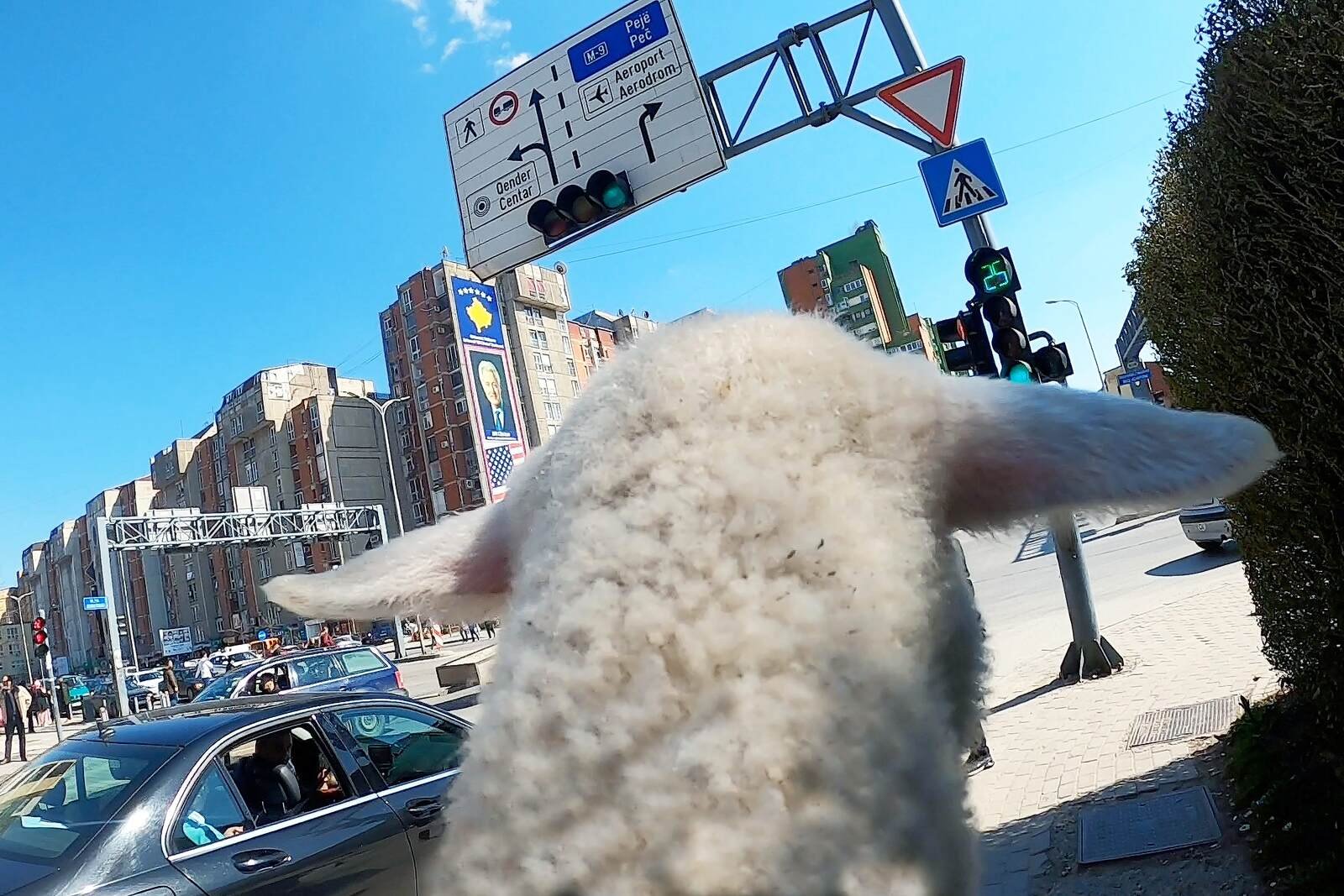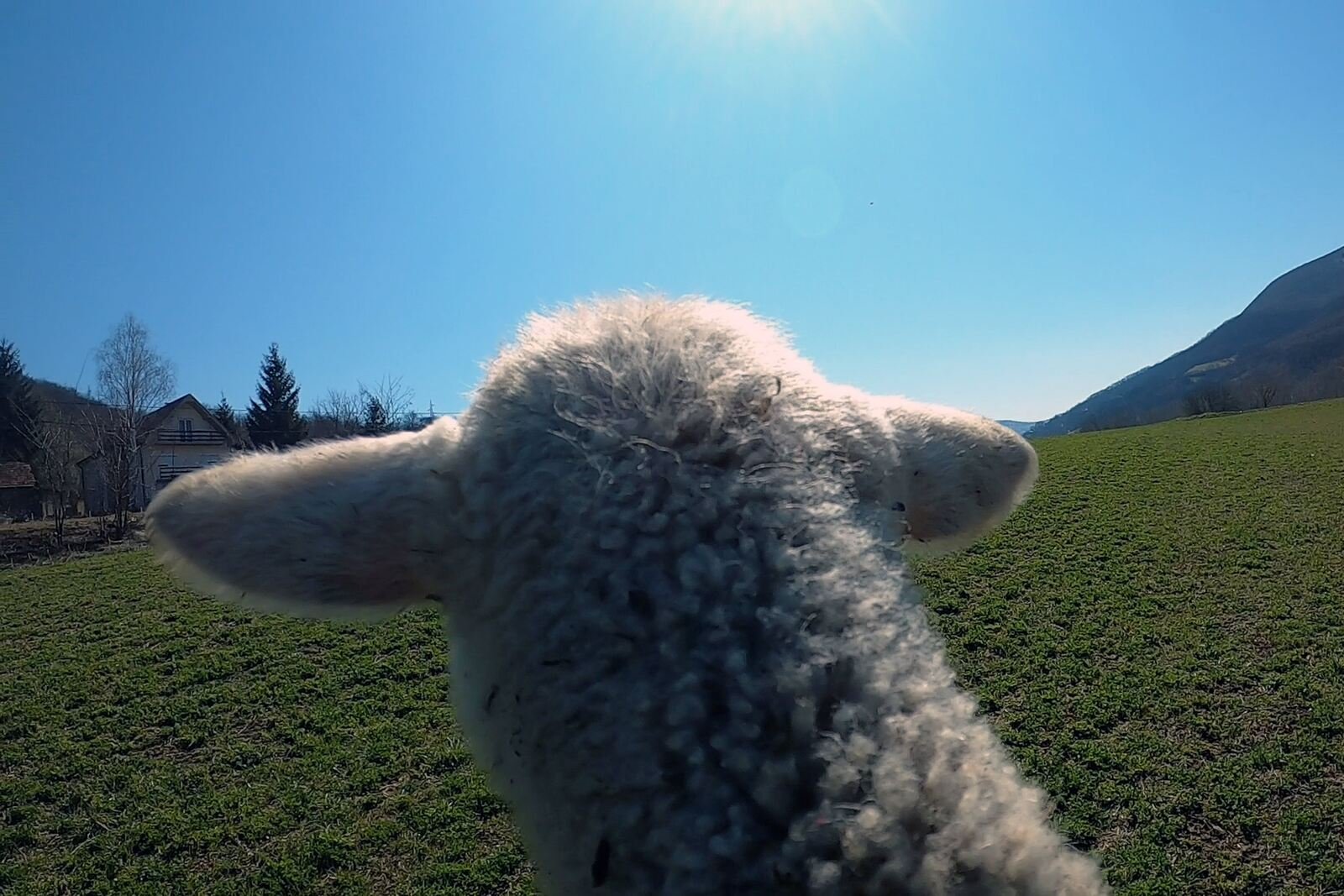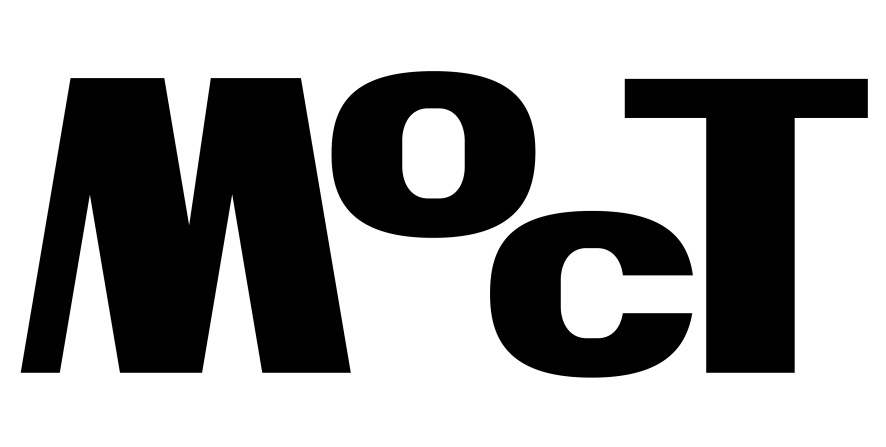Luka Cvetković
There have been rumors about the disappearance of desire from cinema and even museums or art spaces in general, in favor of practices that cherish information as its primary modality (research-based art, politically charged messages, eco-awareness), (re)producing information or knowledge of the world as an unsavory place filled with climate catastrophes, wars and humanitarian crises, the rise of nationalism and far-right ideologies throughout the EU; teaching us in a very straightforward way that the world is a bad place not despite, but because of humans. This is a matter of ideological discourse, not a simple matter of media technology, but could as well be a result of the rise of news as the primary source of information about the world around us, with the raw (and emotionally stimulating, adrenalin-inciting) imagery made available with the touch of a finger. When there is no desire, speculation, or what Timothy Morton calls causality as an aesthetic dimension, what we are left with is a mere reproduction of an image of reality, one which obviously we desperately need to in order to affirm ourselves/our existence. Somewhere along the difficulties in assuming the status of human, and the general powerlessness, we became hooked on news – weightless information with no memory, or simply: where we once sought experience we now get an endless pile of pseudo-events. Therefore, giving away the power of our dreams to the technological unconscious.
Recent discoveries in OOO (object-oriented ontology, a branch of philosophy that does not privilege the existence of human experience over the existence of other, non-human objects) and the speculative materialism of Quentin Meillassoux, a philosopher claiming that “there can be a way to attain reality in itself,” or that “there are objects, events, laws, and beings that are not always already correlated with a subjective access… existing independently of his viewpoint, or his categories, or his epoch, or his culture, or his language, etc.[1],” have offered a path to further decentering the human concerning other objects. This has raised some concerns amongst the general audience as it could be tempting to use OOO as a reason to further “give up on humans.” But it could also be an opportunity to rethink what it means to be human as a decentered being, existing on the same ontological level as any other thing or object, and as such, establishing positions from which new types of relations are produced.
In his series of lectures, Suhail Malik urged for “an exit from contemporary art” as it has become more predictable than ever: “smuggling, exchange without appropriation, deterritorialization, in-betweenness, border crossing, unpolitical-politicality[2],” but even worse, as long as generating experience remains the primary condition for art, art cannot be anything more than correlationist. Art is always connected to the position of the subject (point of view, cultural background, subject identity, etc.) through thought.
But to imagine an exit from contemporary art, it is perhaps necessary to think of a bigger escape: from the circle of Kantian thought and the circle of transgenerational trauma; but also, an escape from the idea of a god-created universe, an exit from probability and necessity itself. So the issue would be to offer a total critique of anthropocentric subjectivity, i.e. without focusing solely on the critique of universal subjectivity through an affirmation of a peculiar, singular, auto-centric subjectivity, but also a critique of the identity of the subject itself. And especially a critique of the art world’s current obsession with identity politics and aesthetics. This would imply thinking of post-correlationist art as a concept – terrain with no interest in the number of goals being scored or even the sport being played but instead with interest in the tools used in the process of dissolving existing discourse. This would allow for new positions from which it is possible to dismantle the concept of the “big other[3]” and thus bring about the end of colonialist structures, that are in themselves based upon the idea of the “other” (the fantasmatic, big other; other as a tool of projective identification in the process of confirming one’s own subjectivity, and, with it, necessity). A position that is not seeking affirmation of subjectivity but one that is without the expectation of art being responsible for confirming existing knowledge, ideological convictions, or that which has been already attained by the subject. A position that is not interested in accumulating power, but performing responsibility by giving power away. That position has to allow for a human that is open to contingent experiences, one that is able to stop performing individual identity.
But what does it mean to be human after all, if we are not success-fuelled, progress-oriented animals building societies where the fittest and toughest survive? Anthropologist Margaret Mead famously said that the biggest evolutionary moment in human history occurred 15,000 years ago when one person healed the leg of another:[4] a moment that did not have to happen, yet it did. That moment is the first example of a contingent event, meaning that human beings, as we exist today, exist because of this contingent form of care.
I have tried to think of an artwork that proposes a break in the circular movement of thought; a proposition that goes hand in hand with the possibility of breaking another vicious circle that exists in the arts and beyond – of transgenerational transmission of trauma, the connection to a contingently different relation to the other, and for concept-oriented art as an exit from established positions, languages, and spaces.
If we don’t want to give up on humans, the decentered subject must not confirm existing relations by reenacting them in a manner of repetitive compulsion. But if in the meantime humans should lose their anthropocentric identity, don’t we have to give up on the circularity of subjective identities?




LAMB is a performance project that took place in Kosovo from the 27th of March to the 3rd of April, in which – for 7 days and 150 km – I carried and cared for a lamb from Jarinje (an ethnically Serbian village in the North) to Kachanik (an ethnically Albanian village in the South of Kosovo), where it continues living with an Albanian-Kosovar farmer to this very day. Vullnet Krasniqi, a fellow traveler and journalist walked alongside, writing about people, nature, and whatever he encountered during these days in a series of reports. A small camera was worn by the lamb to document the performance from the lamb’s perspective, as the main idea was to raise the question of new subjectivity versus pre-existing narratives, concepts, and projections, and to bring into the discussion the new, un-politicized and uncorrupted viewpoint to create an understanding of reality. Or rather, to think of non-exclusively-human realities. What I wanted to propose with that perspective (one that doesn’t look back at or confirm the position of the viewer), is the opportunity to accept the being of the other without human subjectification, without the need to exist primarily to affirm the reality of the other. This position can serve as a starting point to think of events outside necessity and predictability, outside the need of human subjectification; events that decenter the human subject and offer ways of forming contingently new relations to the beings of others. Through non-perspective it is then possible to further alleviate the status of human that performs nationality, territorialism, religion, or in other terms, it suggests a release for the viewer, from having to perform already attained identity positions. This allows for the creation of a space that exists at the end of the circle of transgenerational trauma. It creates discourse without deliberate victimization, survival messages, heroes and villains, Christianity or Islam; nationalistic mythomania, geographical determinism.
This project is happening in Kosovo, a land that can be understood from different perspectives, as it exists in divided realities[5] and again, solely in the authenticity of the reality it creates. The clash of these concepts is what becomes the scenography for the performance. But it is not just a question about the Serbian-Kosovar-Albanian relationship, but how the subject is presented on a much larger scale, as the divided world is dynamically fuelled by issues of transgenerational traumas and questions of territorialism and history. These questions are equally important in China – Hong Kong, USA – Cuba, USA – Mexico, Rwanda – Congo, Belgium – Congo, France – Burundi, France – Libya, Libya – Syria, North Macedonia – Bulgaria and many more. But new generations don’t have the luxury of turning to national mythologies for a safe place; we can no longer hide behind these national traumas and must begin their emotional processing. We cannot afford the belief system that supposes the superiority of certain “ones” over the “others,” or, the geographical determinism that imposes division between peoples. These questions need to be looked at from a fresh point of view. From a position that involves fewer presumptions. Maybe with a knowledge or acceptance of the existence of non-human perspectives, but still those that in one way or another, humans are showing interest in; a type of alien-like perspective, one that we do know is at the same time possible in its own right and oversaturated with human presuppositions, relations, desires, and similarly, we can again re-discover or better yet, reinvestigate concepts of trauma, power, identity on one hand, and on another, produce a de-linking from an exclusively anthropocentric subjectivity. The lamb was, in this sense, a perfect “alien” on earth. It has been suffused with unnecessary symbolism and culturally-coded meaning by humans (derived largely through Christianity, Islam, Judaism, fairytales, and storytelling) and still it is a living being – capable of existing outside of these connotations, of the human mind and experience.
We cannot go into the future with our backs turned against it, constantly looking to the past and mourning over it. There needs to be an antithesis to the Angelus Novus (The Angel of History – Walter Benjamin, Paul Klee); there needs to be a creation of new memory and the discovery of new geographies, released from human subjectivity. There is no new time that will come. The future is the difference between already existing and newly found contingent forms of care; a temporal difference between what we perform as humans and what contingently changes the notion of humans. The future is contingent.
I belong to a generation of people who are more aware of transgenerational trauma than previous generations, so we bear the responsibility of breaking these circles, or at least beginning the process. And to do so, we would have to leave the position that exists through the historic discourse of victimization, the discourse of the big other, and the position that performs power by accumulating it, that is not searching for a revolution (the exit strategy is always conditioned by the limits of the reality it tries to escape), but instead, produces time and space for any outcome, whatever [6]realities and relations are performed or put upon them.
For a genuinely different discourse to emerge, something extraordinary needs to happen, which will need to exist independently from the discourse of colonialism (it would refute the line that separates), or the concept of absolute contradiction (a god-like universe) and one that does not fall into the set of given probabilities; in other terms, it would require an event that is contingent. That condition leads towards a space that enables a different articulation of the concept of the other; and the possibility of the rational acceptance of the existence of experience of the object without subjectification. That is why I propose that breaking the circle of correlationist thought has to go hand in hand with the breaking of the circle of the transgenerational transmission of trauma.
There is a certain danger that a new classification of objects, one that rejects the privileging of human existence over the existence of non-human objects, can slip into a somewhat Heideggerrian differentiation, and that the decentered subject will simply reproduce already known patterns, paths, and circular movement, pre-established by the transgenerational transmission of traumatic content as well as any other system. Because, as we know, humans are not just born into and passively living the circumstances that perpetuate this circulation of trauma, they are themselves the primary condition for the transmission. This is why it does start with you. [7] If we take “human” out of the equation, from any field of human interest that in one way or another touches upon social dynamics, power relations, or knowledge (let’s say OOO and art), what we really take out is not the human, but the responsibility.
In the pre-Pamela Rosenkranz[8] era of new realism – new materialism art – one can see a lot of examples of art oriented toward objects; their relation and withdrawal, questioning ideas around the ontology of the inanimate and organic, concerning an/the object and its relations. But when thinking about what these artworks imply, beyond how well they are informed about “new realisms” and OOO tendencies, so, not directly speaking about what presented objects are when humans are not looking, but instead, what such artworks represent as objects in themselves (and we can make this analysis as the artist is still human, and therefore-not innocent), our minds go towards the objects of the collective self that cannot enter into the socius, that we as a society cannot comprehend or integrate.
And that is the other – the people of Roma origins, the people below the poverty line, the Muslim refugees in Europe, the Trans people living in fear in patriarchal societies – who are invisible to those in positions of power – the politicians, the lawmakers, the left moralists, the Justin Trudeaus and Yannis Varufakiss’ and other “brave fighters.” This is not to say that OOO philosophers or artists following this logic or discourse are producing anything exclusionary or harmful, but rather without humans is also without the position of human responsibility.
OOO and Speculative Realism (as any other flat ontology) are to be considered a very important tool in fighting problematic conditions, but not as a solution for art itself. Maybe what we are scared to admit is that on some level, in order to refute the conditions that hold the frames that our realities are performed upon (colonial, racist, capitalist, patriarchal performativity of power, anti-ecological, etc.), and producing possible futures, we do need a form of magic; a miracle, leap-of-faith scenario, a non-philosophical reaction to the binary, predictable, necessity-driven universe. A walk that leaves no trace; a monument without a hero; an animal’s gaze and knowledge of that which can never be experienced. An opportunity for a production of without-human-interest time and space not navigated by anthropocentric desires – not because it is good or bad to do so – but because it becomes possible to dissolve the concept of the big other, and in its absence, perform relations that are not obliged to be binary – either right and wrong or good and evil – as events are no longer necessary or probable, and therefore, subject to contingent relations themselves.


Luka Cvetkovic is an artist and researcher at The New Centre. His art practice spans video, text, performance, and installation, and explores the dynamics between power, aesthetics, and potentiality.
[1]see MEILLASSOUX, Quentin, edited by LONGO, Ana, Time With- out Becoming, London, Mimesis International, 2014, pg. 10
[2]see MALIK, Suhail, Exit not escape – On The Necessity of Art’s Exit from Contemporary Art, 2013, exit, not escape
[3]Here and for the rest of the text I refer to the concept of the Big Other as a merger of projective identification (psychological process introduced by Melanie Klein) that operates under the conditions of the Lacanian Big Other, dictating unconscious and invisible processes in society and constituting self in relation to the other (often one that is evil, scary, maleficent, barbaric, etc). The big other which is embodied through separation (of the self and the world).
[4]The exact quote is a mystery as it has never been properly documented. More about it here https://www.sapiens.org/culture/margaret-mead-femur/
[5]*disputed territory*, *republic of Kosovo*, the republic of Serbia, *Serbian national mythology*, *Albanian national mythology*, *big Albania*, *semi-recognized state*, *post-war land*, *divided territory*, *Slavic colonialism*
[6]See AGAMBEN, Giorgio, The coming community, pg 1-87, Turin, La comunita che viene 1990, Copyright University of Minnesota press
[7]Antithesis to Wolynn’s 2017th book on the psychological legacy of historical trauma, see CHERAPANOV Elena, Understanding the Transgenerational legacy of Totalitarian Regimes, pg. 18 “History always begins with you” till the end of the page, Routlage publisher, New York, 2021
[8]6 see ROSENKRANZ, Pamela, Humans are mammals too, Louisianna Channel, humans are mammals too
Artist(s): Luka Cvetković
Links: https://lukacvetkovic.com/
https://mediumsans.com/fr/serif/luka-cvetkovic/history-always-begins-with-you

